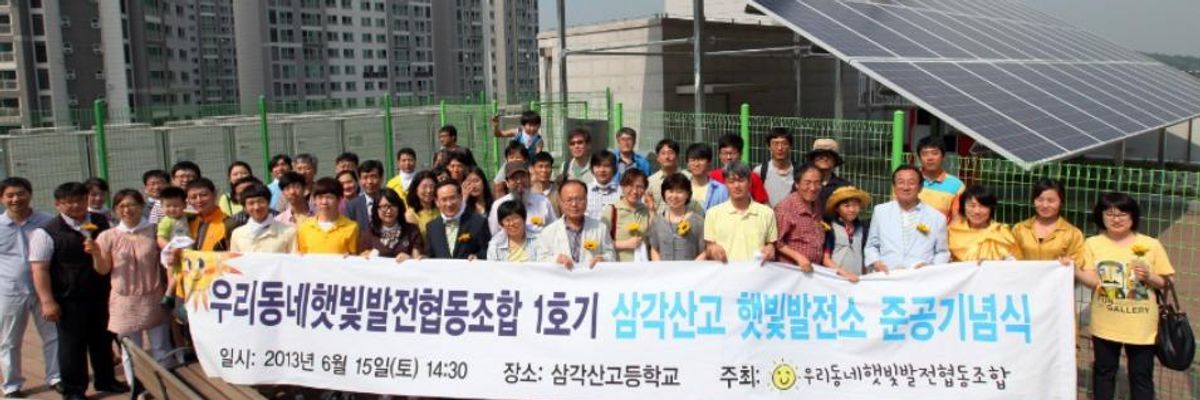This week on the 12th and the 13th of July there will be the International Forum for Sustainable Asia and the Pacific (ISAP 2016) in Japan. An annual forum that brings together frontline experts and stakeholders from international organisations, governments,businesses, and NGOs to discuss sustainable development in Asia and the Pacific. An important topic since Asia faces two destructive and entwined crises - growing inequality and climate change. The sustainable future of our planet depends on whether Asia can rise to these challenges and transform its economic and political systems.
With economic powerhouses like China and South Korea neighboring some of the poorest countries in the world, the region faces extreme inequality both between and within countries. 1.75 billion Asians live in extreme poverty and lack the basic necessities of a dignified life,according to new modeling by the Asian Development Bank. Asia is one of the most biodiverse regions in the world, but also home to some of the biggest polluters. With climate change already wreaking devastation on communities and ecosystems throughout the region. Expect even more hunger, drought, floods and forced migration of millions unless urgent action is taken on greenhouse gas emissions.We can no longer afford to see environmental problems as isolated and separate from social justice. Climate change and growing inequality are symptoms of the dysfunction of the current economic system. The time has come to address them together. Transformative solutions springing up across the region show a people-powered pathway to sustainability, say sa new report by Friends of the Earth (FoE) Asia Pacific.Here's three high-impact ideas for a fairer and cleaner world, that can be replicated, scaled up and expanded throughout the region.
1. Community Forest Management
Indonesia's deforestation is chronic.15.8million hectares of forest were lost between 2000 and 2012. The devastation ruins local livelihoods and increases global warming. Big businesses are often responsible, implementing large-scale projects characterized by land grabs, disrespect for farmers, and a lack of understanding of traditional forest management methods.
Yet peasant unions, environmental organisations and communities are pushing back. By supporting small-scale farmers with free legal services, training in community organizing and connecting them directly with local consumers. Together they are developing a community-led model to protect the country's forests based on recognizing the land rights of subsistence farmers, sustainable management of non-timber forest products, and traditional knowledge. Community Forest Management (CFM) enables communities to benefit from forests without depleting natural resources or damaging the climate. It encompasses many local and indigenous communal resource management practices, and it works. A meta-analysis of case studies covering 40 Protected Areas and33 CFM experiences in South America, Africa and Asia found that areas under community management presented lower deforestation rates than those under absolute protection regimes.
This model is already being massively scaled up. The Indonesian government has promised 12.7 million hectares of forest area(landmass of England) for community based forestry by 2019. This will help to secure the livelihoods of millions people and protect forests from destructive industrial logging practices.
2. Schools as Renewable Energy Cooperatives
South Korea is predicted to double its 1990 greenhouse gas emissions by 2030, with inadequate government action on climate change.
But ordinary people are building a citizen-owned solar movement to reduce dependence on dirty energy. A renewable energy cooperative has started in Seoul and is installing solar panels on the roofs of Samgaksan high school and Hanshin University. The community raised 180 million Korean Won(180,000 USD dollars) to fund the project. The clean electricity generated is used to power these new 'Solar schools'.
Cooperatives provide a democratic alternative to the corporate model, which often exploits people for profit, by empowering people to control their energy production. Cooperatively owned solar power is an exciting exchange between people and environmental action, financially benefiting members while at the same time fighting climate change.
Community owned renewable energy is expanding rapidly throughout the world and a vital part of gaining popular support for an energy revolution. In2012,34%of renewable energy in Germany was community owned,which is a driving force in the country's energy transition.
The Solar Schools plans to expand to generate 500kW by 2017 and other co-ops are popping up throughout South Korea.
3. Revolving Funds
Income uncertainty plagues Sri Lanka's Nilgala communities. Many are forced to borrow from moneylenders at high interest rates to meet their basic needs.Even micro credit programs have prohibitively high interest rates.
The forests where they live and the adjoining Gal Oya National Park are protected, with medicinal plants an important source of income. Community beliefs enshrine a need to protect the forest, thus building economic resilience and conservation go hand in hand.
The Revolving Fund idea was born to address both of these issues simultaneously. Locals and environmental organizations created protection committees in 10 villages, with more than 500 beneficiary families receiving 800,000 Sri Lankan Rupees (US$5,500). The fund enables people to borrow at an interest rate of 1% and has supported community forest management planning.
Now the total fund has doubled and remains in the village under collective control. The fund helps villagers with income in hard times and reduced dependence on black market moneylenders. Conservation has also improved measurably.
Local communities, donors and NGOs working together on alternative and participatory financial models like the Revolving Funds can make people's lives better while supporting the environment.
Thousands of practical solutions for a more just and sustainable Asia are being implemented everyday across the region. These solutions put people and the planet at the centre of economic systems and expand the role of cooperation, community management, workers' control, public services and sustainable planning in all aspects of life.
To increase the impact of these solutions governments in the region should develop and adopt measures and programs to support them, and work together with communities to scale up Asia's transformative ideas.

